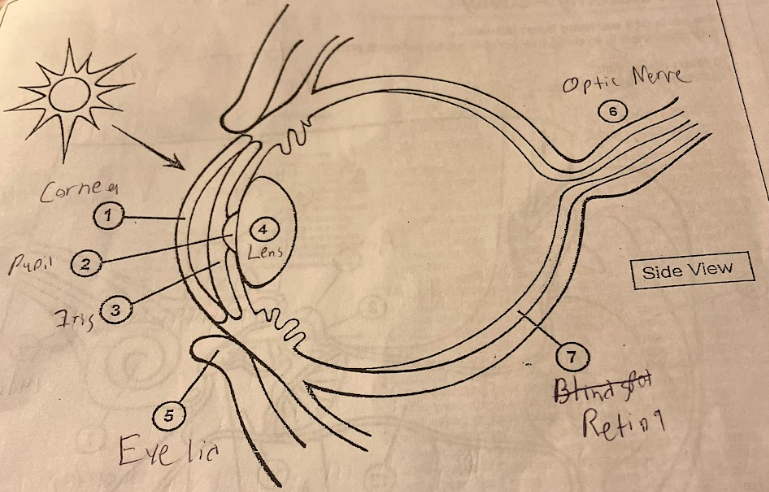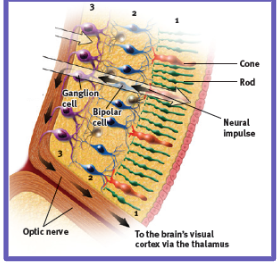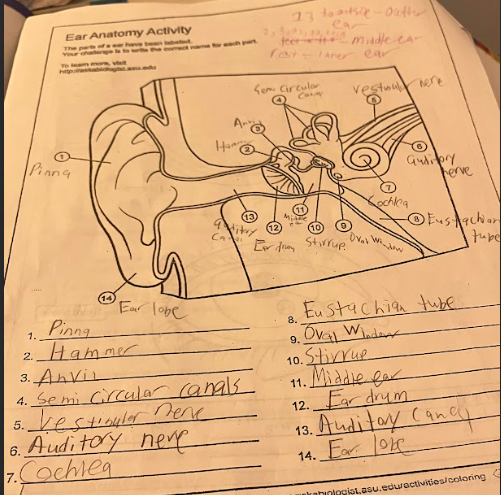Sensation & Perception: Transduction
What is transduction?
Transduction in sensation is the transforming of stimulus energy into neural impulses our brain can interpret.
Transduction in the eye:
The light waves enter the eye through through the cornea, which bends light to help provide focus.
Then, it passes through the pupil, an opening controlling by the iris, (a ring of colored muscle tissue that constricts or dilates).
After the light waves pass through the the pupil, it hits the lens, which changes its curvature & thickness.
The lens focuses the light waves on the fovea, which is located on the retina.
Clustered around the fovea are cones and in the periphery of the retina are rods. A chemical reaction occurs in the rods and cones, which activates the bipolar cells, which then actives the ganglion cells.
The axons of the ganglion cells converge to form the optic nerve, which carries the neural impulses to the thalamus, & then to the visual cortex in the occipital lobes.


Transduction in the ear:
The outer ear consists of the pinna, which is the visible portion of the ear; the auditory canal, which is the opening into the head; and the eardrum.
The outer ear channels sound waves to the eardrum that vibrates with the sound waves. This causes the ossicles (the hammer, anvil, and stirrup) to vibrate.
The vibrating stirrup pushes against the oval window of the cochlea in the inner ear, jostling the fluid inside the cochlea.
This motion causes ripples in basilar membrane that has hair cells that are bent by the vibrations, which transduces the sound waves to neural impulses.
Hair cells synapse with auditory neurons whose axons form the auditory nerve. The auditory nerve transmits sound messages through the thalamus to the auditory cortex of the temporal lobes.
